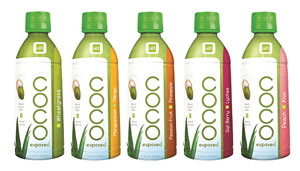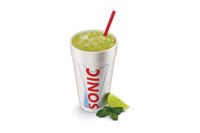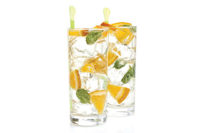
|
“It probably comes as no surprise, but price is very important to consumers right now,” she says. “Across the board, whether you’re talking about 100% juice or juice drinks, a low price is the most important attribute in choosing a product.”
Three-fifths of all juice and juice drink buyers look for low price when shopping, which suggests that any price increases from manufacturers might cause consumers to move away from that particular brand, according to Mintel’s juice report. To reduce shoppers’ focus on price, the report advises juice and juice drink manufacturers to communicate their brand’s value proposition and special characteristics, such as a functional aspect, drinking experience or unique flavor.
Favorite flavors
Consumers are more willing to try new fruit blends; however, straight orange and apple juices are still the most popular, notes Zenith’s Hall.
Mintel’s Theodore agrees, adding that cranberry and fruit punch join orange and apple juices in the Top 5 varieties. Surprisingly, she also points out that superfruit juices saw a decline in 2011.
“The number of new products using pomegranate as a flavor is about half of what it was in 2010, and the number of mangosteen-flavored products has declined quite dramatically as well,” she says. “Some of that could be due to price: superfruit juices are generally priced higher than traditional juices. It could also be that superfruit consumers are more experimental and have simply moved on to other flavors.”
From 2008 to 2010, consumption of juice and juice drinks has remained the same in U.S. households, according to Mintel’s juice report. Consumption of orange juice, however, decreased significantly from 2006 to 2010. To increase juice consumption, beverage-makers need to get creative, the market research firm suggests. It recommends positioning juices as a healthy alternative to sports drinks, or creating crossover products, such as fruit juice-based energy drinks and fruit juice-based teas.
“Juice adds a natural element to a product, so juice-based products have the potential to appeal to different groups of consumers,” Theodore says.
Last summer, The Campbell Soup Co., Camden, N.J., launched V8 V-Fusion + Energy drinks and V8 Energy Shots. The energy drinks blend fruit and vegetable juices with green tea. Each 8-ounce slim can contains 80 milligrams of caffeine, which is comparable to the leading energy drink in the market, the company says. They also contain B vitamins, do not have any added sugar, and are 50 calories. V8 Energy Shots also combine nine types of fruit and vegetable juices with green tea extract, but add vitamins A, C and E, and vitamins B1, B2, B3, B6 and B12. The 2.5-ounce energy shots contain as much caffeine as an 8-ounce cup of coffee, the company says.
“We are branching into the energy drink market with the kinds of nutritious beverages that V8 is known to deliver,” said Dale Clemiss, vice president of V8 Beverages, in a statement. “People can now feel good about drinking an energy drink or shot with a combined serving of vegetables and fruit and powered naturally by green tea.”


